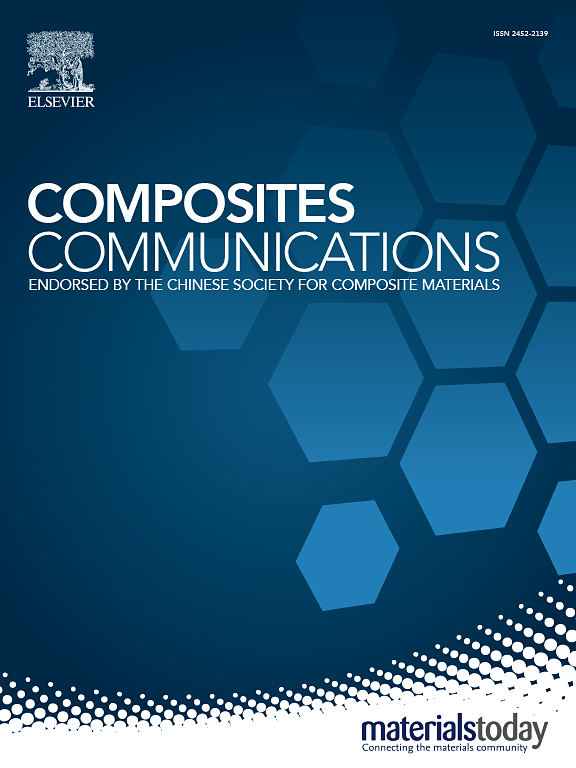利用绿色软木改善硬质聚氨酯泡沫隔热材料的综合性能,促进建筑节能
IF 6.5
2区 材料科学
Q1 MATERIALS SCIENCE, COMPOSITES
引用次数: 0
摘要
生物质改性聚氨酯(PU)泡沫材料对促进可持续发展至关重要,但与石化基聚氨酯泡沫材料相比,如何平衡其机械强度和隔热性能仍是一项挑战。在此,我们引入了适量的软木来制造具有良好隔热性能和机械强度的聚氨酯复合泡沫。添加的软木可作为发泡过程中的成核剂,进一步调整泡沫结构,提高其综合性能。软木塞用量峰值为 24% 的最佳复合泡沫也属于高效绝缘材料,其导热系数为 0.043 W m-1 K-1,拉伸强度为 0.17 MPa,弯曲强度为 0.16 MPa,具有良好的抗冲击性。这项研究为利用环保软木作为替代品开发综合性聚氨酯绝缘材料提供了有价值的见解,并为高效利用生物质资源提供了参考。本文章由计算机程序翻译,如有差异,请以英文原文为准。
Ameliorating the comprehensive performance of rigid polyurethane foam insulating materials by green cork for building energy conservation
Biomass-modified polyurethane (PU) foam materials are vital to promote the sustainable development, but the balance between their mechanical strength and thermal insulating ability remains a challenge compared to the petrochemical-based PU foams. Herein, an appropriate amount of cork is introduced to fabricate PU composite foams with good thermal insulating performance and mechanical strength. The added cork could act as a nucleating agent during the foaming process, further tailor the foam structure and enhance their comprehensive performance. The optimal composite foams containing the peak cork usage of 24 % also belong to the high-efficiency insulating materials, with a thermal conductivity of 0.043 W m−1 K−1, a tensile strength of 0.17 MPa, a bending strength of 0.16 MPa, and good impact resistance. This research provides valuable insights for developing the comprehensive PU insulating materials by utilizing eco-friendly cork as substitutes, and offers a reference for highly efficient utilization of biomass resources.
求助全文
通过发布文献求助,成功后即可免费获取论文全文。
去求助
来源期刊

Composites Communications
Materials Science-Ceramics and Composites
CiteScore
12.10
自引率
10.00%
发文量
340
审稿时长
36 days
期刊介绍:
Composites Communications (Compos. Commun.) is a peer-reviewed journal publishing short communications and letters on the latest advances in composites science and technology. With a rapid review and publication process, its goal is to disseminate new knowledge promptly within the composites community. The journal welcomes manuscripts presenting creative concepts and new findings in design, state-of-the-art approaches in processing, synthesis, characterization, and mechanics modeling. In addition to traditional fiber-/particulate-reinforced engineering composites, it encourages submissions on composites with exceptional physical, mechanical, and fracture properties, as well as those with unique functions and significant application potential. This includes biomimetic and bio-inspired composites for biomedical applications, functional nano-composites for thermal management and energy applications, and composites designed for extreme service environments.
 求助内容:
求助内容: 应助结果提醒方式:
应助结果提醒方式:


